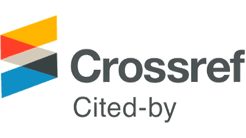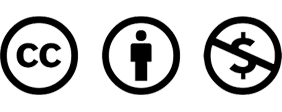Original Articles
Al Meselmani M.A. 2022, Nutrient solution for hydroponics. Soilless culture. IntechOpen, London, UK. doi:10.5772/ intechopen.101604.
10.5772/intechopen.101604Cheng F., J. Wu, and X. Wang 2014, Genome triplication drove the diversification of Brassica plants. Hortic Res 1:14024. doi:10.1038/hortres.2014.24
10.1038/hortres.2014.2426504539PMC4596316Cho W.J., H.J. Kim, D.H. Jung, D.W. Kim, T.I. Ahn, and J.E. Son 2018, On-site ion monitoring system for precision hydroponic nutrient management. Comput Electron Agric 146:51- 58. doi:10.1016/j.compag.2018.01.019
10.1016/j.compag.2018.01.019Choi G.L., K.H. Yeo, S.H. Choi, H.J. Jeong, N.J. Kang, and H.G. Choi 2017, Effect of EC level of irrigation solution on tomato growth and inorganic ions of root zone in soilless culture of tomato plant using coir substrate. J Bio-Env Con 26:418-423. doi:10.12791/KSBEC.2017.26.4.418
10.12791/KSBEC.2017.26.4.418Dekker M., R. Verkerk, and W.M. Jongen 2000, Predictive modelling of health aspects in the food production chain: a case study on glucosinolates in cabbage. Trends Food Sci Technol 11:174-181. doi:10.1016/S0924-2244(00)00062-5
10.1016/S0924-2244(00)00062-5Devi N.D., and T. Arumugam 2019, Salinity tolerance in vegetable crops: a review. J Pharmacogn Phytochem 8:2717-2721.
Ding X., Y. Jiang, H. Zhao, D. Guo, L. He, F. Liu, Q. Zhou, D. Nandwani, D. Hui, and J. Yu 2018, Electrical conductivity of nutrient solution influenced photosynthesis, quality, and antioxidant enzyme activity of pakchoi (Brassica campestris L. ssp. Chinensis) in a hydroponic system. PloS one 13:e0202090. doi:10.1371/journal.pone.0202090
10.1371/journal.pone.020209030157185PMC6114716Ding X., H. Zhang, T. Qian, L. He, H. Jin, Q. Zhou, and J. Yu 2022, Nutrient concentrations induced abiotic stresses to sweet pepper seedlings in hydroponic culture. Plants 11:1098. doi:10.3390/plants11081098
10.3390/plants1108109835448826PMC9027179Flowers T.J. 2004, Improving crop salt tolerance. J Exp Bot 55:307-319. doi:10.1093/jxb/erh003
10.1093/jxb/erh00314718494Fu H., and Y. Yang 2023, How plants tolerate salt stress. Curr Issues Mol Biol 45:5914-5934. doi:10.3390/cimb45070374
10.3390/cimb4507037437504290PMC10378706Gillespie D.P., G. Papio, and C. Kubota 2021, High nutrient concentrations of hydroponic solution can improve growth and nutrient uptake of spinach (Spinacia oleracea L.) grown in acidic nutrient solution. HortScience 56:687-694. doi:10.21273/HORTSCI15777-21
10.21273/HORTSCI15777-21Hosseini H., V. Mozafari, H.R. Roosta, H. Shirani, P.C. van de Vlasakker, and M. Farhangi 2021, Nutrient use in vertical farming: Optimal electrical conductivity of nutrient solution for growth of lettuce and basil in hydroponic cultivation. Horticulturae 7:283. doi:10.3390/horticulturae7090283
10.3390/horticulturae7090283Kaur N., J. Kaur, S.K. Grewal, and I. Singh 2019, Effect of heat stress on antioxidative defense system and its amelioration by heat acclimation and salicylic acid pre-treatments in three pigeonpea genotypes. Indian J Agric Sci 32:106-110. doi:10.5958/0974-4479.2019.00014.5
10.5958/0974-4479.2019.00014.5Keck A.-S., and J.W. Finley 2004, Cruciferous vegetables: cancer protective mechanisms of glucosinolate hydrolysis products and selenium. Integr Cancer Ther 3:5-12. doi: 10.1177/1534735403261831
10.1177/153473540326183115035868Kesawat M.S., N. Satheesh, B.S. Kherawat, A. Kumar, H.-U. Kim, S.-M. Chung, and M. Kumar 2023, Regulation of reactive oxygen species during salt stress in plants and their crosstalk with other signaling molecules current perspectives and future directions. Plants 12:864. doi:10.3390/plants12040864
10.3390/plants1204086436840211PMC9964777Kim H.M., H.M. Kim, H.W. Jeong, H.R. Lee, B.R. Jeong, N.J. Kang, and S.J. Hwang 2018, Growth of mother plants and occurrence of daughter plants of 'maehyang' strawberry as affected by different EC levels of nutrient solution during nursery period. J Bio-Env Con 27:185-190. doi:10.12791/ KSBEC.2018.27.2.185
10.12791/KSBEC.2018.27.2.185Kimera F., M. Mugwanya, M. Dawood, and H. Sewilam 2023, Growth response of kale (Brassica oleracea) and nile tilapia (Oreochromis niloticus) under saline aqua-sandponics-vegeculture system. Sci Rep 13:2427. doi:10.1038/s41598-023- 29509-9
10.1038/s41598-023-29509-936765067PMC9913015Lee S.G., C.S. Choi, J.G. Lee, Y.A. Jang, C.W. Nam, K.H. Yeo, H.J. Lee, and Y.C. Um 2012, Effects of different EC in nutrient solution on growth and quality of red mustard and pak-choi in plant factory. J Bio-Env Con 21:322-326.
10.12791/KSBEC.2012.21.4.322Lichtenthaler H.K., and C. Buschmann 2001, Extraction of phtosynthetic tissues: chlorophylls and carotenoids. Curr Protoc Essent Lab Tech f4.2-f4.2.6. doi:10.1002/0471142913. faf0403s01
10.1002/0471142913López-Berenguer C., M.C. Martínez-Ballesta, C. García-Viguera, and M. Carvajal 2008, Leaf water balance mediated by aquaporins under salt stress and associated glucosinolate synthesis in broccoli. Plant Sci 174:321-328. doi:10.1016/j.plantsci.2007.11.012
10.1016/j.plantsci.2007.11.012Lu Y., and W. Fricke 2023, Salt Stress-Regulation of root water uptake in a whole-plant and diurnal context. International Intt J Mol Sci 24:8070. doi:10.3390/ijms24098070
10.3390/ijms2409807037175779PMC10179082Manchali S., K.N.C. Murthy, and B.S. Patil 2012, Crucial facts about health benefits of popular cruciferous vegetables. J Funct Foods 4:94-106. doi:10.1016/j.jff.2011.08.004
10.1016/j.jff.2011.08.004Marques G., D. Aleixo, and R. Pitarma 2019, Enhanced hydroponic agriculture environmental monitoring: An internet of things approach. In V. Krzhizhanovskaya, ed, Computational Science - ICCS 2019: 19th International Conference, Faro, Portugal, June 12-14, 2019, Proceedings, Part III, Vol 19. Springer, Faro, Portugal, pp 658-669.
10.1007/978-3-030-22744-9_51Mawlong I., M. Sujith Kumar, B. Gurung, K. Singh, and D. Singh 2017, A simple spectrophotometric method for estimating total glucosinolates in mustard de-oiled cake. Int J Food Prop 20:3274-3281. doi:10.1080/10942912.2017. 1286353
10.1080/10942912.2017.1286353Miękus N., K. Marszałek, M. Podlacha, A. Iqbal, C. Puchalski, and A.H. Świergiel 2020, Health benefits of plant-derived sulfur compounds, glucosinolates, and organosulfur compounds. Molecules 25:3804. doi:10.3390/molecules25173804
10.3390/molecules2517380432825600PMC7503525Misra V., A. Mall, and M.I. Ansari 2021, Physiological and molecular responses to salinity due to excessive Na+ in plants. Harsh Environment and Plant Resilience: Molecular and Functional Aspects pp 291-303.
10.1007/978-3-030-65912-7_11PMC8388348Nawaz H., M.A. Shad, and S. Muzaffar 2018, Phytochemical composition and antioxidant potential of Brassica. Brassica Germplasm Charact. Breed. Util 1:7-26. doi:10.5772/intechopen.76120
10.5772/intechopen.76120Nguyen V.T., J. Stewart, M. Lopez, I. Ioannou, and F. Allais 2020, Glucosinolates: Natural occurrence, biosynthesis, accessibility, isolation, structures, and biological activities. Molecules 25:4537. doi:10.3390/molecules25194537
10.3390/molecules2519453733022970PMC7582585Othman Y., K. Bataineh, M. Al-Ajlouni, N. Alsmairat, J. Ayad, S. Shiyab, B. Al-Qarallah, and R. St Hilaire 2019, Soilless culture: Management of growing substrate, water, nutrient, salinity, microorganism and product quality. Fresenius Environ Bull 28:3249-3260.
Rahman M., A. Khatun, L. Liu, and B.J. Barkla 2018, Brassicaceae mustards: Traditional and agronomic uses in Australia and New Zealand. Molecules 23:231. doi:10.3390/molecules23010231
10.3390/molecules2301023129361740PMC6017612Rahneshan Z., F. Nasibi, and A.A. Moghadam 2018, Effects of salinity stress on some growth, physiological, biochemical parameters and nutrients in two pistachio (Pistacia vera L.) rootstocks. J Plant Interact 13:73-82. doi:10.1080/17429145. 2018.1424355
10.1080/17429145.2018.1424355Raja V., U. Majeed, H. Kang, K.I. Andrabi, and R. John 2017, Abiotic stress: Interplay between ROS, hormones and MAPKs. Environ Exp Bot 137:142-157. doi:10.1016/j.envexpbot. 2017.02.010
10.1016/j.envexpbot.2017.02.010Saberi Riseh R., M. Ebrahimi-Zarandi, E. Tamanadar, M. Moradi Pour, and V.K. Thakur 2021, Salinity stress: toward sustainable plant strategies and using plant growth-promoting rhizobacteria encapsulation for reducing it. Sustainability 13:12758. doi:doi.org/10.3390/su132212758
10.3390/su132212758Sakamoto M., and T. Suzuki 2020, Effect of nutrient solution concentration on the growth of hydroponic sweetpotato. Agronomy 10:1708. doi:10.3390/agronomy10111708
10.3390/agronomy10111708Salehi B., C. Quispe, M. Butnariu, I. Sarac, I. Marmouzi, M. Kamle, V. Tripathi, P. Kumar, A. Bouyahya, and E. Capanoglu 2021, Phytotherapy and food applications from Brassica genus. Phytother Res 35:3590-3609. doi:10.1002/ptr.7048
10.1002/ptr.704833666283Severo J., A. Tiecher, F.C. Chaves, J.A. Silva, and C.V. Rombaldi 2011, Gene transcript accumulation associated with physiological and chemical changes during developmental stages of strawberry cv. Camarosa. Food Chem 126:995-1000. doi:10.1016/j.foodchem.2010.11.107
10.1016/j.foodchem.2010.11.107Soundararajan P., and J.S. Kim 2018, Anti-carcinogenic glucosinolates in cruciferous vegetables and their antagonistic effects on prevention of cancers. Molecules 23:2983. doi:10.3390/molecules23112983
10.3390/molecules2311298330445746PMC6278308Traka M. 2016, Health benefits of glucosinolates. Adv Bot Res 80:247-279. doi:10.1016/bs.abr.2016.06.004
10.1016/bs.abr.2016.06.004Verkerk R., M. Schreiner, A. Krumbein, E. Ciska, B. Holst, I. Rowland, R. De Schrijver, M. Hansen, C. Gerhäuser, and R. Mithen 2009, Glucosinolates in Brassica vegetables: the influence of the food supply chain on intake, bioavailability and human health. Mol Nutr Food Res 53:S219-S219. doi: 10.1002/mnfr.200800065
10.1002/mnfr.20080006519035553- Publisher :The Korean Society for Bio-Environment Control
- Publisher(Ko) :(사)한국생물환경조절학회
- Journal Title :Journal of Bio-Environment Control
- Journal Title(Ko) :생물환경조절학회지
- Volume : 33
- No :4
- Pages :436-444
- Received Date : 2024-09-27
- Revised Date : 2024-10-24
- Accepted Date : 2024-10-27
- DOI :https://doi.org/10.12791/KSBEC.2024.33.4.436



 Journal of Bio-Environment Control
Journal of Bio-Environment Control









